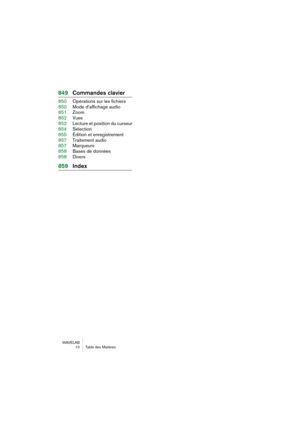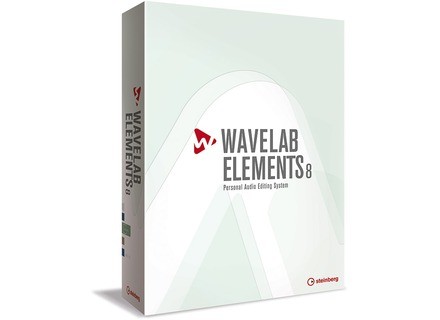
- WAVELAB ELEMENTS MANUAL MANUAL
- WAVELAB ELEMENTS MANUAL FULL
- WAVELAB ELEMENTS MANUAL SOFTWARE
- WAVELAB ELEMENTS MANUAL PC
All editing in WaveLab is non‑destructive to your source recording, unless you choose otherwise.

Projects are the best way of working in WaveLab (unless you're doing only simple, one‑off edits) and these also retain Snapshot and Marker information. Multiple files can be opened and displayed, and you can save your workspace on quitting when you next boot it up, WaveLab will automatically load WAV files and database information, and even recall a Toolbar position. WaveLab also features a comprehensive set of key commands to help speed up operation. Most windows have 'speed' menus, activated by clicking the right mouse button, which contain the most commonly‑used functions - you can quickly switch between the units used for Time and Level measurement using the Rulers speed menu, for example. The colour of most text and graphics is user‑definable and can be saved as a Style in the Options menu. All in all, it's a very useful set of reference and learning tools.įrom the moment it boots, WaveLab looks special. Tip of the Day consists of a Help box containing a brief explanation of a WaveLab routine or shortcut. Copy protection relies on occasional polite requests to insert the CD‑ROM - so much more civilised than the dreaded dongle! WaveLab has Windows Help and on‑line contextual Help, and there's also 'Tips' Help, which pops up when you point to a screen icon, and describes its function.
WAVELAB ELEMENTS MANUAL FULL
The CD‑ROM contains the program, Cubase information, and over 200Mb of wave files from Best Service, including some utterly gobsmacking drums and instruments from New World Order Journeys 1 & 2 (watch out for a full SOS Sample Shop review shortly).
WAVELAB ELEMENTS MANUAL MANUAL
The package consists of a CD‑ROM and a clearly‑written manual with comprehensive index and tutorials. Audio files from Cubase v3 (see review in the July issue of SOS) can be directly imported into WaveLab for fine editing and processing, and Cubase v3 audio segment boundaries are translated into WaveLab markers. The program is also ideal for use with the current version of Cubase.
WAVELAB ELEMENTS MANUAL PC
It works with any 16‑bit, stereo, 44.1kHz Windows MME soundcard, both PC WAV and Mac AIFF file formats are supported, and WaveLab will edit Digidesign Session 8 files too. WaveLab is two program modules: a stereo digital audio recorder/editor/multi‑processor, and the Audio Access database, a disk‑orientated soundfile librarian. For the multimedia developer, WaveLab provides fast, high‑grade sample rate conversion and batch processing. If you're on a tight budget, you could just about use WaveLab as a stand‑alone recorder for compiling albums or working on extended remixes, despite the limited playlist features - sadly, WaveLab is not yet the PC's answer to Sound Designer II on the Mac.

To help you reach that elusive next level of refinement and control, WaveLab provides a bank of fast audiophile wave processors, including Timestretch, Chorus, Harmoniser and EQ with spectral analysis, all integrated into an easy‑to‑use, high‑quality environment for all those tricky edits. To provide the missing editing power, Steinberg have launched WaveLab. But although they may be great multitrackers, the audio editing facilities of these programs may be rather basic, often restricted to simple cut, paste, volume and pan functions.

Software‑driven, and using soundcards within the PC, these programs offer a fantastic range of creative opportunites to the musician of today.

JANET HARNIMAN COOK assesses whether Steinberg have built on their status in the sequencer field with a successful PC wave editing program.Īs the PC music juggernaut gathers pace, the proliferation of 'MIDI + Audio' sequencers and budget hard disk audio recorders continues unabated.
WAVELAB ELEMENTS MANUAL SOFTWARE
This sophisticated new PC digital editor is up against such established software as Sound Forge and Samplitude Studio.


 0 kommentar(er)
0 kommentar(er)
